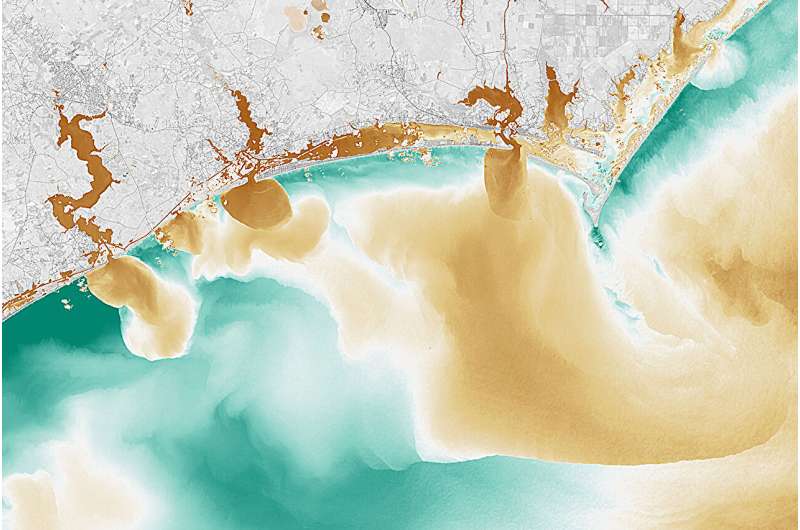This article has been reviewed according to Science X's editorial process and policies. Editors have highlighted the following attributes while ensuring the content's credibility:
fact-checked
trusted source
proofread
Genetic sequencing uncovers unexpected source of pathogens in floodwaters

Researchers report in the journal Geohealth that local rivers and streams were the source of the Salmonella enterica contamination along coastal North Carolina after Hurricane Florence in 2018—not the previously suspected high number of pig farms in the region.
These findings have critical implications for controlling the spread of disease caused by antibiotic-resistant pathogens after flooding events, particularly in the coastal regions of developing countries that are being highly impacted by the increase in tropical storms.
The study, led by civil and environmental engineering professor Helen Nguyen and graduate student Yuqing Mao, tracks the presence and origin of S. enterica from environmental samples from coastal North Carolina using genetic tracing.
"Infections caused by antibiotic-resistant pathogens are responsible for approximately 2.8 million human illnesses and 36,000 deaths per year in the U.S. alone," Nguyen said. "These infections spread easily across the globe and are a major burden on burgeoning health care systems, but they are preventable through mitigation."
The study reports that because human and animal fecal genetic markers are often found in flood waters, it is commonly assumed wastewater sources, septic systems, and livestock farms are responsible for spreading antibiotic-resistant bacteria and genetic material into the environment. However, no known studies have conclusively identified contaminant source points.
"Coastal North Carolina is a great case study area because there is a high concentration of swine farms and private septic systems, and coastal flooding caused by tropical storms is fairly common," Nguyen said.
Three weeks after Hurricane Florence, Nguyen's team collected 25 water samples from water bodies downstream of the swine farms in agricultural production areas in North Carolina, 23 of which contained the S. enterica bacteria.
"We analyzed free-floating genetic markers—chromosomes and plasmids—using high-fidelity whole-genome sequencing and found that S. enterica in the samples collected after Hurricane Florence were not from animals or manure," Nguyen said.
The team genetically traced the bacteria's origin to the many small local rivers and streams in the area—meaning that these pathogens have already established themselves in the natural environment.
"With climate change bringing warmer temperatures—in which bacteria thrive—and possibly larger and more frequent tropical storms, the importance of our findings needs to be realized by researchers and policymakers," Nguyen said. "Agricultural and human wastewater should not be the only source considered when designing mitigation plans to prevent the spread of pathogenic bacteria after hurricanes."
Nguyen's team plans to extend this research beyond coastal regions and is collaborating with other campus researchers to study the spread of pathogens from Canada goose feces in Illinois.
More information: Yuqing Mao et al, Local and Environmental Reservoirs of Salmonella enterica After Hurricane Florence Flooding, GeoHealth (2023). DOI: 10.1029/2023GH000877
Provided by University of Illinois at Urbana-Champaign




















